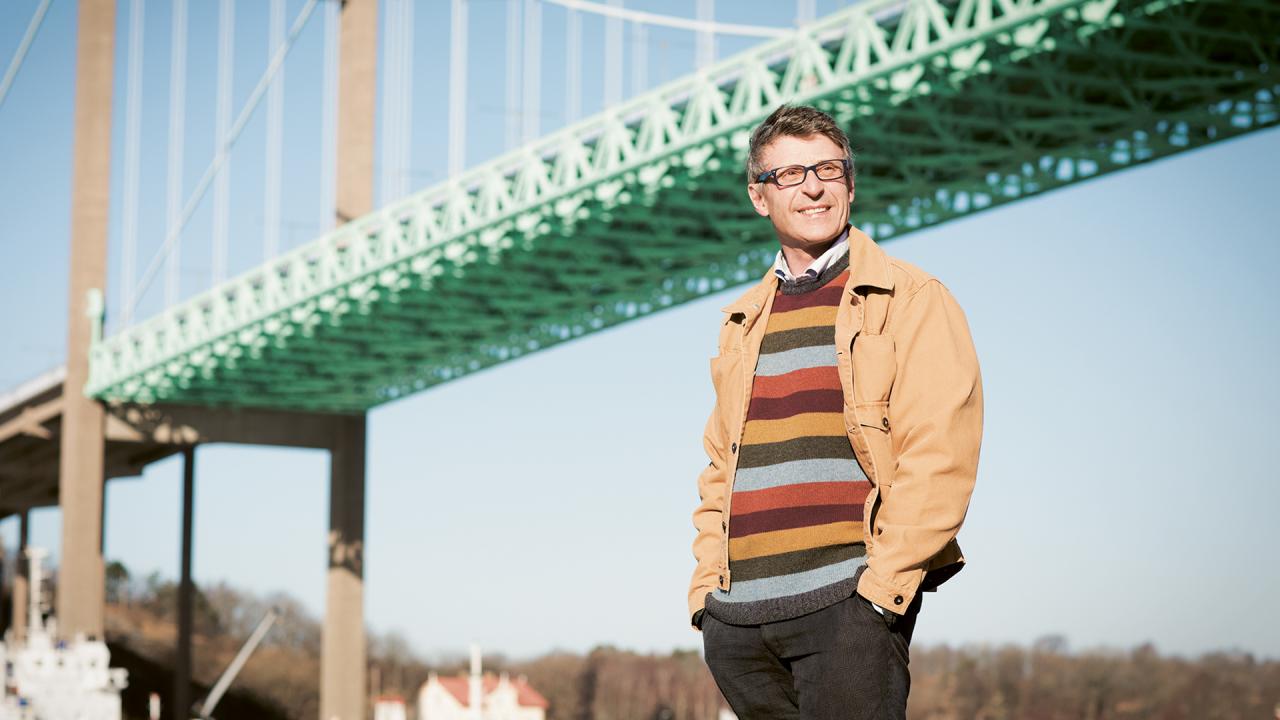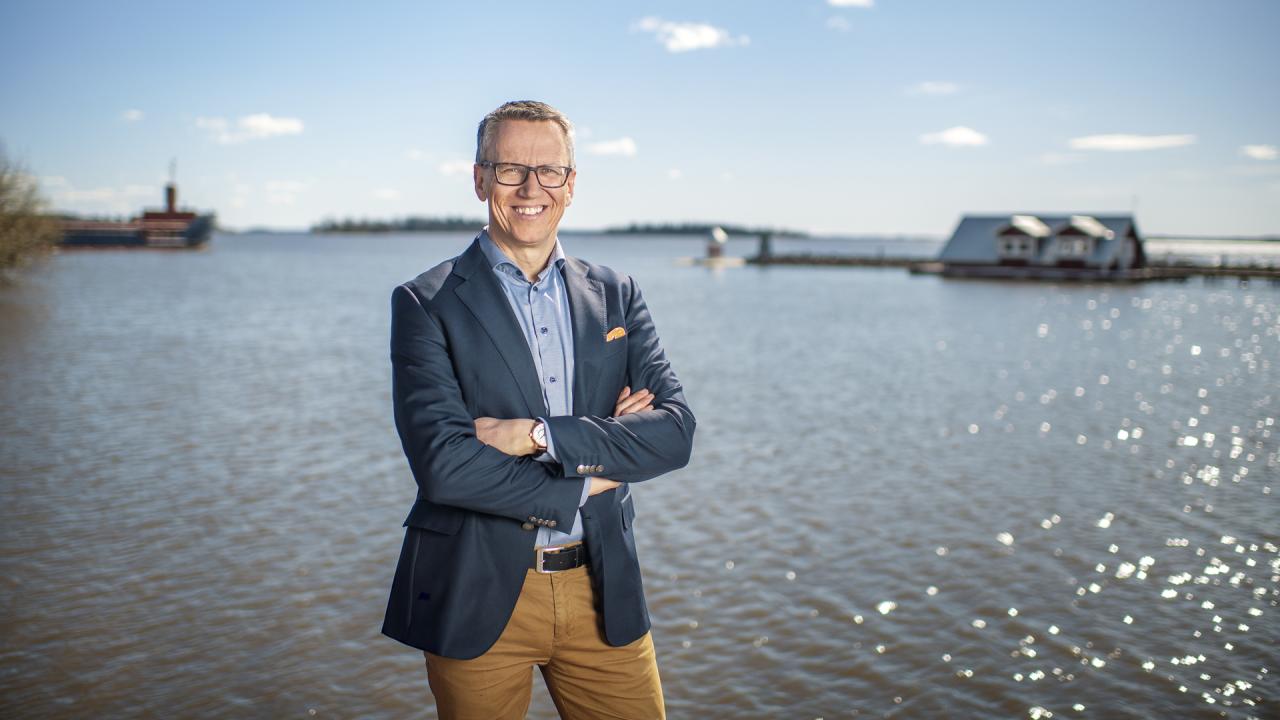Finland and Sweden collaborating on icebreaker design

Sweden and Finland both have outdated icebreaker fleets, but now they’ve taken their first joint step in the development of a next generation icebreaker concept. The icebreakers must be capable of serving ships with growing displacements while also coping with tomorrow’s ice conditions.
INCREASINGLY, FREIGHT IS being moved from road transport to ships, and a major part of Finnish and Swedish foreign trade is shipped by sea. Thus it is vital for industry that ports in the Gulf of Bothnia remain open and accessible all year round.
“Talks with maritime shipping and industry representatives not only clarify the need for a different type of icebreaker able to serve ever wider ships, but also cope with new ice characteristics. A milder climate, more wind and less widespread ice can actually make navigation more difficult in ice-covered waters. Areas of pack ice and ice ridges can form that are often tougher than solid ice,” says Anders Dahl, head of the icebreaker unit at the Swedish Maritime Administration.

So, in March 2020, the Swedish Maritime Administration and the Finnish Transport Infrastructure Agency began collaborating on the design of a modern ice breaker concept.
“Our icebreakers are showing their age and the equipment on board is simply beginning to wear out. There’s been no spare parts left on the shelf for many years,” says Anders Dahl, before adding:
“The demand for icebreaker assistance has changed in recent years. While ships are getting bigger, environmental standards limit their power and thus their ability to navigate ice-covered waters unaided. WALLENIUS SOL is a living example of innovative thinking in maritime shipping. These big new ice-rated, LNG-fuelled ships show that the company is ready to turn words into action!”
Few but clear requirements
The focus is clear; the new icebreakers must be able to transition to fossil-free fuel, to clear a 32-metre channel in contrast to today’s 24 metres, and to use some kind of hybrid electrical solution. The current design work will show how this will look in practice, and three different concepts and a benchmark are being developed and tested.
“We plan to have completed a design proposal by the end of 2021, but the project team will present a concept and a cost estimate for building the new icebreakers as early as April,” says Anders Dahl.
Then it’s up to the respective governments to decide on the way forward and how the new vessels will be funded. Both the Swedish Maritime Administration and the Finnish Transport Infrastructure Agency recommend state funding and the introduction of a dedicated maritime transport business fund similar to the existing railways fund.

Swedish-Finnish collaboration
Today there are five active icebreakers in Sweden and nine in Finland, a fleet that was partly developed in collaboration between the countries in the 1970s when the five Urho/Atle class icebreakers were built, together with the sister ships Sisu, Ymer and Frej. Thus this is not the first time that the two countries are working on a similar project together and the Finnish Transport Infrastructure Agency sees the collaboration as a great advantage:
“We have a mutual problem that has to be tackled – sea ice in the Gulf of Bothnia. So it’s natural that we’re investing in this project jointly; it’s more efficient to pool our resources in this way,” says Helena Orädd, who is the single point of contact for the Finnish Transport Infrastructure Agency in the project group.
Anders Dahl agrees:
“Being able to do this together is invaluable. We’ve spent the last couple of years completing the preparatory work prior to the design, and Finland brings loads of experience from Polaris, its most recent LNG-powered ice breaker from five years ago.”
However, collaboration is limited to the design project per se. It’s not clear if the countries will build the new icebreakers jointly or separately if and when the time comes. But both agree that the need for new icebreakers is great.
In Addition

Ragnar Johansson: “An infrastructure project that must be funded by the state”
Despite the great need for new icebreakers, no decision has yet been taken to build them. WALLENIUS SOL’s Managing Director Ragnar Johansson supports the project and the recommendation for public funding.
What position did WALLENIUS SOL take in the discussions concerning new icebreakers?
We’ve had positive talks about the size of our new ships, since they’re much bigger than the ships that have plied the Gulf of Bothnia so far. However I am somewhat concerned that the design parameter of a 32 meter clear channel is not sufficient for our bigger vessels with a width of 35 meters. Future ships will be bigger and wider and it would a disaster if the new icebreakers would be outdated before they even are built. I believe there are more investigations to be done before a final design is decided.
What will the new icebreaker concept mean for Sweden and Swedish basic industry?
Considering the huge industrial investments being made in the north, closing northern ports during the four months every year when we lack open water is not an option. Rail and road will never be able to swallow the millions of additional tons that will have to be shipped during the sea ice season. And with three of our five icebreakers approaching end-of-life, we simply have to replace them.
A new icebreaker costs around SEK 1.5 billion; what are your thoughts about funding?
The icebreakers are a national infrastructure project that must be funded by the state. Industries in the North are already handicapped by their distance from the market. Charging fairway fees – a direct cost to industry – to meet the cost of the icebreakers would be devastating for industry and shipping alike. The Government’s national infrastructure plan shows that maritime shipping only accounts for a few per cent of the budget. It would be reasonable for maritime shipping to account for a significantly larger proportion of the next infrastructure plan, with special regard to funding the icebreakers.



